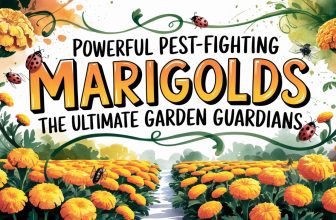Root Rot: The Ultimate Guide to Saving Your Plants
Are your houseplants looking vibrant and healthy one day, only to wilt and wither the next? It could be a case of root rot silently taking hold of your precious greenery.
But fear not, because in this comprehensive guide, you will uncover the essential strategies to combat and conquer this common threat to indoor plants.
By understanding the insidious nature of root rot and implementing proactive measures, you can ensure the longevity and vitality of your beloved botanical companions.
So, if you're ready to reclaim the thriving beauty of your indoor garden, then join us as we unravel the ultimate guide to saving your plants from the clutches of root rot.
Understanding Root Rot
Understanding root rot is essential for preventing and addressing this common plant affliction. The causes and risk factors of root rot include overwatering, poor soil drainage, and using pots without adequate drainage.
Good drainage is crucial in preventing root rot, as it helps to keep the soil from becoming waterlogged. When the soil is consistently waterlogged, it creates an anaerobic environment that encourages the growth of root rot pathogens. Therefore, it's important to use pots with drainage holes and well-draining soil to promote healthy root conditions.
Additionally, ensuring that you water your plants only when the top inch of soil is dry can also help prevent the onset of root rot.
Signs and Symptoms
To identify root rot in your plants, look for visible signs such as wilting leaves and a foul odor emanating from the soil, which can be linked back to the causes and risk factors previously discussed.
Common causes of root rot include overwatering, poor soil drainage, and using containers without proper drainage holes.
Preventing future occurrences involves using well-draining potting mix, ensuring pots have drainage holes, and avoiding overwatering. Additionally, be cautious of using garden soil in indoor plant pots, as it may contain root rot fungi.
When repotting, choose a pot that's only one size larger than the current one to prevent waterlogged conditions.
Preventative Measures
You can prevent root rot in your plants by ensuring adequate light and pot size, choosing the right soil type, and taking additional proactive measures.
- Situate plants immediately in front of a window or use grow lights
- Use a light meter to quantify light intensity
- Repot using a pot that's only one size larger than the current one
- Amend potting mix with materials like perlite or pumice for well-drained soil
- Drainage holes in pots are essential for healthy roots and plants
Common causes of root rot include overwatering and using potting mix with poor drainage. To prevent this, discard potting mix from plants suspected of root rot, and water plants only when the top inch of soil is dried out. Additionally, always ensure proper drainage by using pots with drainage holes.
Proper Light and Potting
Ensure that your plants are situated in front of a window or use grow lights to provide them with the adequate light they need to thrive. When choosing the right grow lights, opt for full-spectrum LED lights to mimic natural sunlight. Position the lights about 12 inches above the plants and keep them on for 12-16 hours a day.
Proper watering techniques are crucial for preventing root rot. Water your plants only when the top inch of soil is dry, and ensure that the pots have drainage holes to prevent waterlogging. Additionally, repot your plants using a pot that's only one size larger than the current one to avoid water retention and root suffocation.
Soil Selection and Management
Selecting the appropriate soil type is crucial for preventing root rot and ensuring the health of your indoor plants. When it comes to soil selection and management, here are some key points to consider:
- Choosing the right potting mix: Opt for well-draining potting mixes and consider adding materials like perlite or pumice for improved drainage.
- Proper watering techniques: Water your plants only when the top inch of soil is dried out to prevent root rot. Also, consider using pots with drainage holes and avoid using garden soil in indoor plant pots.
Identifying Infected Plants
To identify infected plants, carefully inspect the foliage and soil for signs of discoloration, wilting, or foul odors. Early detection is key to preventing the spread of root rot.
Common causes to look out for include overwatering, poor drainage, and using soil that retains too much moisture. Check for yellowing or browning of leaves, stunted growth, and a mushy texture in the affected areas.
Additionally, monitor the soil for a musty or rotten smell, which can indicate fungal growth. If you notice any of these symptoms, take immediate action to prevent further damage to your plants. Early intervention is crucial in saving your plants from the devastating effects of root rot.
Treatment and Recovery
Now that you've identified the signs of root rot and understand the causes, it's time to take action to treat and recover your affected plants.
Here are some essential steps to help you combat root rot and nurse your plants back to health:
- Proper Drainage: Ensure your plant pots have drainage holes and use well-draining soil to prevent waterlogging.
- Adjust Watering: Water your plants only when the top inch of soil is dry to avoid overwatering.
- Repotting: Consider repotting affected plants into smaller pots with fresh, well-draining soil to promote root recovery.
- Disinfection: Disinfect tools and pots with isopropyl alcohol or bleach solution to prevent the spread of root rot.
- Preventive Measures: Take steps to prevent root rot in the future, such as using appropriate pot sizes and avoiding overwatering.
Tools and Equipment
Ensure that you have the necessary tools and equipment to effectively combat and prevent root rot in your plants. Disinfecting equipment, such as pruning shears and pots, is crucial to prevent the spread of root rot pathogens. Use a solution of isopropyl alcohol or bleach to thoroughly clean and disinfect your tools after each use.
Additionally, maintaining proper humidity levels in your plant's environment is essential for preventing root rot. Invest in a hygrometer to monitor humidity levels and use a humidifier or pebble tray to adjust and maintain the ideal humidity for your plants.
Potting and Repotting Techniques
When repotting your plants to prevent root rot, select a pot that's only one size larger than the current one for optimal growth and health. Choosing the right pot size is crucial in preventing root rot and promoting healthy plant growth.
Consider these tips for potting and repotting techniques:
- Repotting frequency: Repot your plants when they outgrow their current pot or show signs of root-bound growth.
- Proper pot size: Select a pot that's only one size larger than the current one to avoid overpotting, which can lead to waterlogged soil and root rot.
- Drainage holes: Ensure the new pot has adequate drainage to prevent water accumulation and root suffocation.
- Soil type: Use a well-draining potting mix to promote healthy root growth and prevent water retention.
- Maintenance: Trim any damaged or rotting roots before repotting to encourage new, healthy root growth.
Salvaging Your Plants
Selecting the right pot size is crucial for preventing root rot and maintaining healthy plant growth. If your plant is showing signs of root rot, such as wilting or yellowing leaves, it's essential to take immediate action to save it.
The most common causes of root rot are overwatering, using pots without drainage holes, and using soil that retains too much water. To salvage your plant, carefully remove it from the pot, discard any affected soil, and trim away any rotted roots.
Repot the plant into a smaller pot with fresh, well-draining soil to prevent further root rot. Additionally, ensure that you adjust your watering schedule and provide adequate light to promote healthy growth and prevent future occurrences of root rot.
Frequently Asked Questions
Can I Use a Regular Garden Soil for My Indoor Plants, or Is It Likely to Lead to Root Rot?
Yes, you should avoid using regular garden soil for your indoor plants as it's likely to lead to root rot. It retains too much water, lacks proper drainage, and may contain root rot fungi.
Opt for well-drained potting mix and consider amending it with materials like perlite for better drainage.
Water your plants only when the top inch of soil is dried out to prevent root rot and choose a soil type suitable for your specific plant species.
How Can I Disinfect My Gardening Tools and Pots to Prevent the Spread of Root Rot?
To disinfect your gardening tools and pots and prevent the spread of root rot, use a solution of isopropyl alcohol or bleach. Soak the tools and pots for at least 10 minutes, then rinse and dry thoroughly. This will kill any potential root rot fungi and help keep your plants healthy.
Regularly disinfecting your tools and pots is an important prevention method for maintaining plant health.
What Are the Best Types of Pots for Indoor Plants to Prevent Root Rot?
To prevent root rot, there are a few steps you can take. First, choose pots made of breathable materials like terracotta or unglazed ceramic. These pots allow for better air and water exchange, reducing the risk of root rot.
Second, make sure that the pots have drainage holes. This is important because it allows excess water to escape and prevents water from pooling at the bottom, which can lead to root rot.
Additionally, consider using pot feet to elevate the pots. By doing this, you can improve airflow around the pot and further reduce the risk of root rot.
On the other hand, it is best to avoid using plastic pots without drainage holes. These pots can trap water and create a waterlogged environment, which is conducive to root rot.
If you want to create a humid environment for your plants without waterlogging the soil, you can use pebble trays. Simply place a tray filled with pebbles and water underneath the pot. As the water evaporates, it will create humidity around the plant without saturating the soil.
Are There Any Specific Types of Plants That Are More Susceptible to Root Rot Than Others?
To prevent root rot, consider vulnerable species like ferns, peace lilies, and pothos. Ensure proper plant care with well-draining soil types and suitable potting mix.
Disinfection techniques involving isopropyl alcohol or bleach are essential. Avoid overwatering and use terra cotta pots to aid in drying out the soil.
These preventative measures can help protect plants prone to root rot and maintain their health.
Can I Use a Regular Potting Mix for All My Indoor Plants, or Should I Use Different Types Depending on the Plant Species?
You can use a regular potting mix for most indoor plants, but it's essential to consider different soil types based on plant species and their requirements.
Some plants may need well-draining soil, while others thrive in moisture-retentive mixes. It's crucial to tailor your potting mix to the specific needs of your plants to ensure optimal growth.
Understanding the different soil types and their benefits for various plant species will help you provide the best care for your indoor greenery.
Conclusion
Now that you have the knowledge and tools to tackle root rot, your plants are in good hands.
By taking proactive measures and making necessary adjustments to their environment, you can ensure their continued health and vitality.
With a little care and attention, your indoor garden will soon be thriving once again.
Don't let root rot dampen your plant-parenting spirit – you've got this!
Disclaimer: GardeningNorm is a participant in the Amazon Services LLC Associates Program and may receive a commission if you purchase a product via a link on this page.. However, this does not impact our reviews.Read the full disclosure here.



